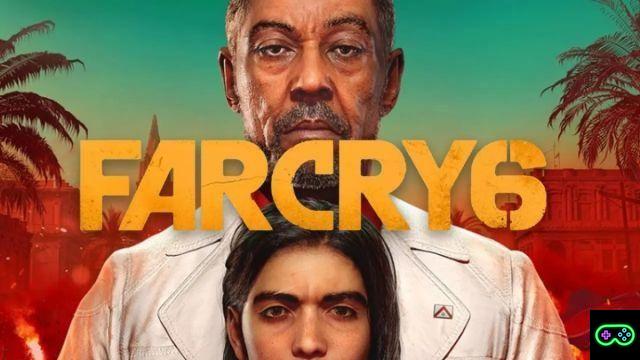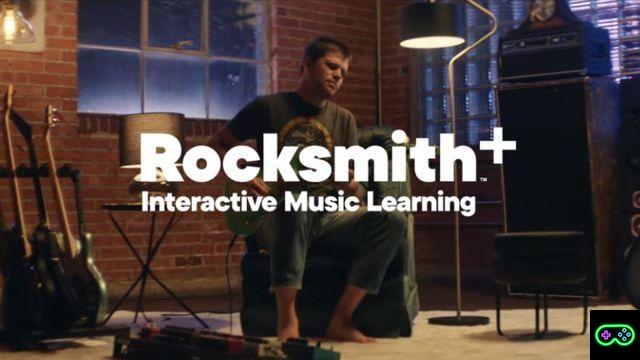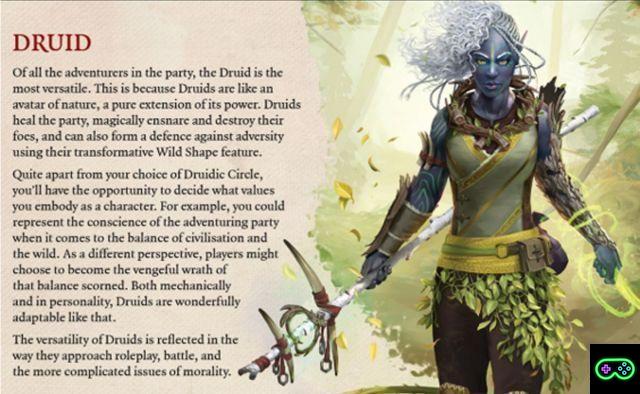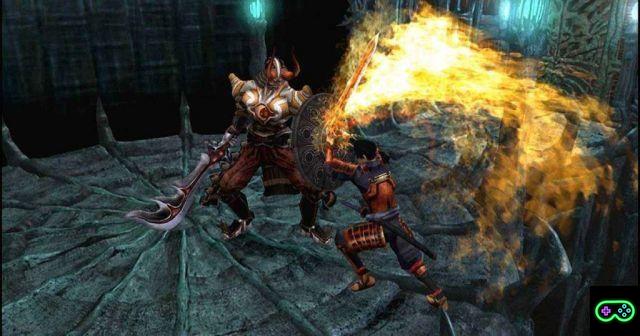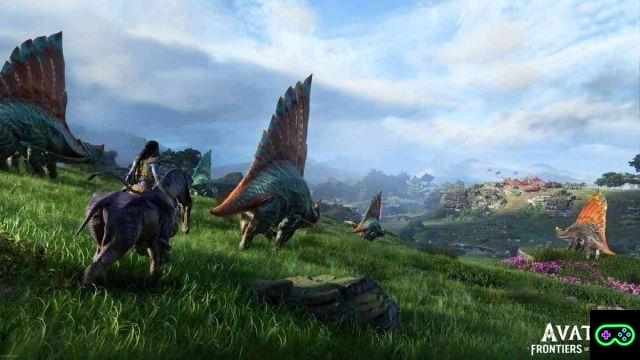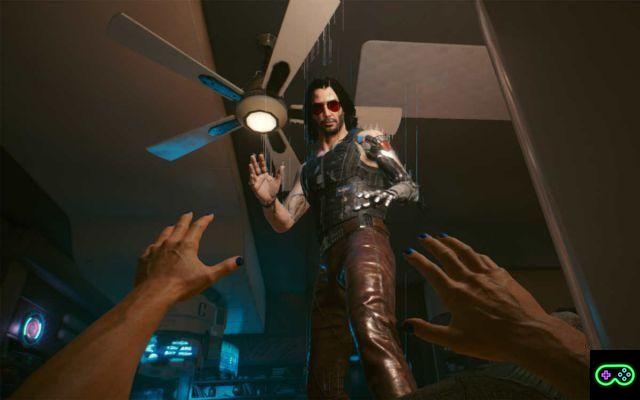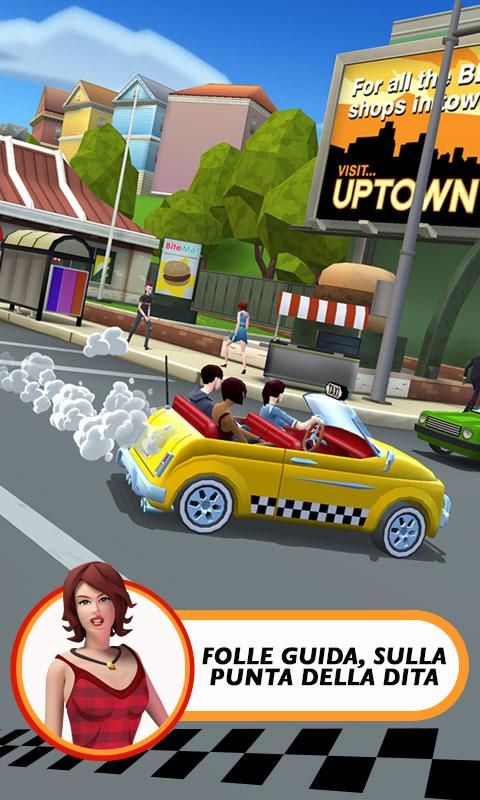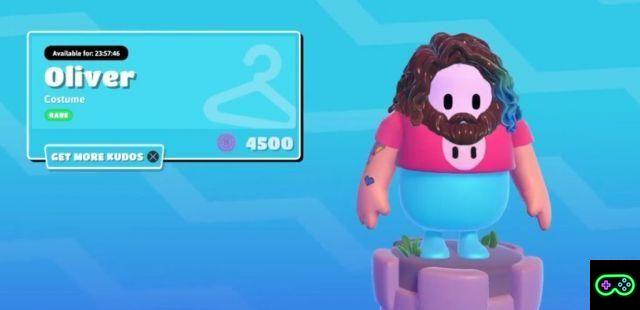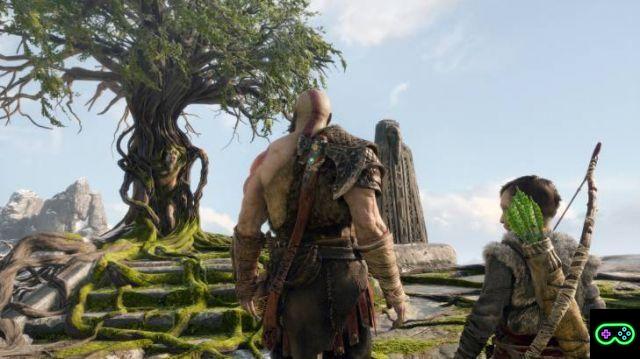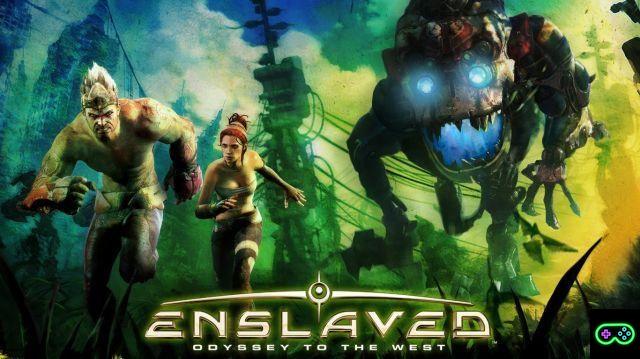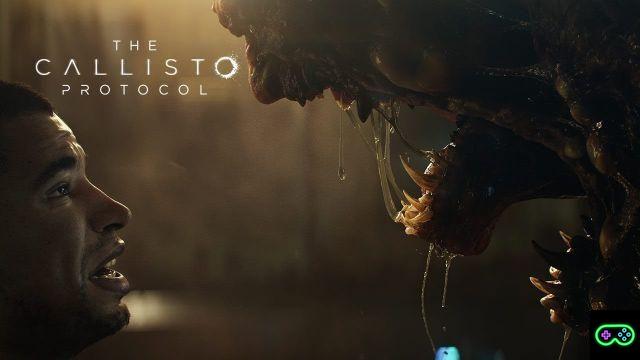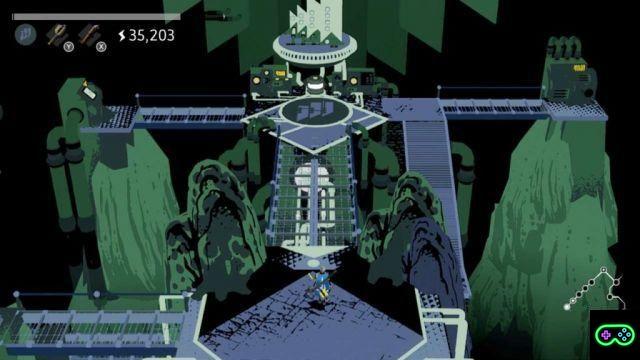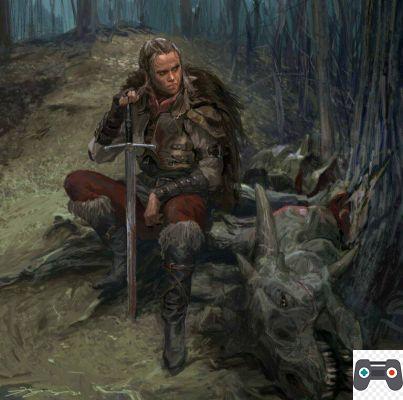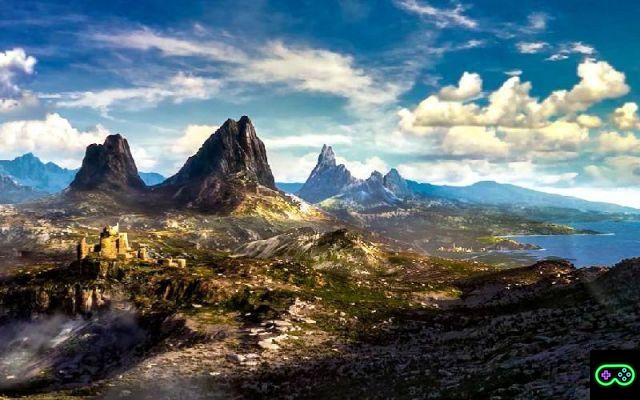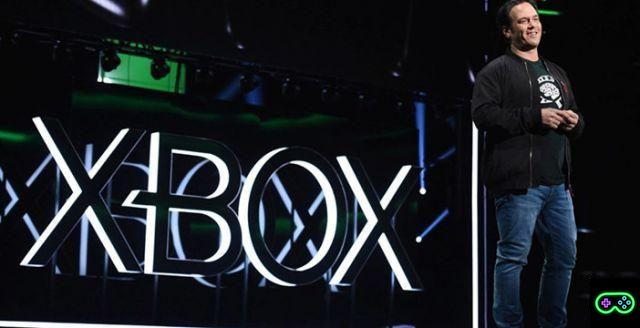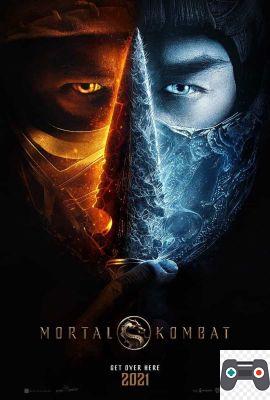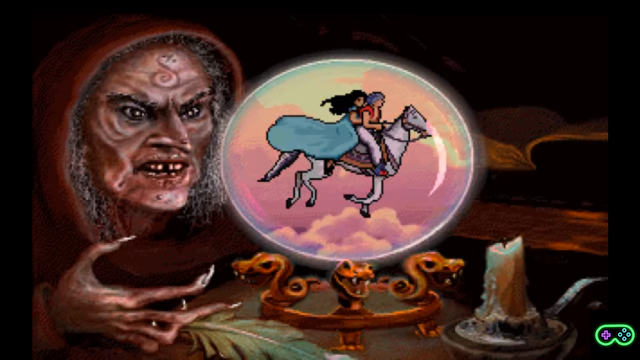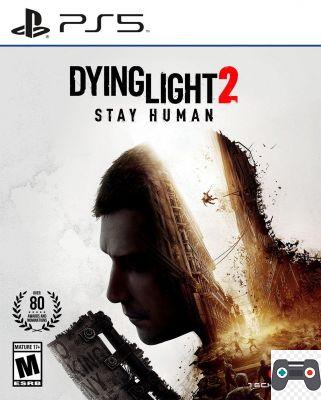
Have you ever thought that the expectations on a title could prove to be a dangerous double-edged sword? Have you ever wondered if the excessive hype for a video game can affect the video game itself, if the latter does not reach that degree of "perfection" so coveted by fans?
Forgive the double question of "raw oil", but I think it is good to start our reading with these questions, asking ourselves how far the damage caused by over the top marketing (and the consequent reactions of the public) can go.
Without going too far back in time, let's say a couple of excellent names they come to mind. Fallout 76, Anthem and the never-too-mentioned Cyberpunk 2077 (for which review our good Daniel is still in the middle of his path of redemption) are some of the most striking examples of how too much limiting the hand in the proclamations can damage the final product not a little, especially if, to all this, we add a development with some hitch.
In Dying Light 2 there were all the necessary premises to repeat the success of its predecessor, filling the gaps and implementing new mechanics, so as to renew an already winning formula without the risk of distorting it.
Well, something went wrong.
The title Techland fails, for a whole series of factors, to take the flight that would have delivered it to excellence. The reasons for what has now been written? All of which can be summed up in a single concept: stumbling upon what, at least on paper, must have been your strengths.
But, as usual, don't rush: we have an entire review to talk about it!
New year, new zombie apocalypse!
It has now been 15 years since the events of Harran, but humanity seems to have fallen back into the same mistakes of the past: it does not pay for the events that occurred in the Turkish city, the GRE, a humanitarian association (but only a facade), continued to research the virus that had turned humans into zombies, with the aim of turning it into a bacteriological weapon. As could be expected, a new pandemic has been generated, this time on a large scale, and humanity has once again been called to survival.
In this sequel we will take on the role of Aiden Caldwell which, unlike many, has embraced the path of the "Pilgrim", refusing the safety of the fortified walls of the last human cities to wander from one settlement to another. Little is known about our hero's past, but we know immediately what his purpose is: to find Mia, his beloved sister, from whom he was separated under mysterious circumstances. Aiden has only one clue available; a name, to be precise: Waltz, a mysterious figure who, years ago, conducted experiments on behalf of the GRE on a large group of children, which also included the protagonist and Mia.
As soon as he arrives in Villedor, one of the last bastions of humanity, his search will suffer an abrupt halt; Aiden will in fact be bitten by a zombie, thus becoming an infected, and will realize that the road that leads him to Waltz and Mia is currently blocked by a (more or less) cold war between two different factions. On the one hand we have the Survivors, probably the largest group, made up of people of various kinds who, in one way or another, try in every way to reconstruct and give a semblance of civilization to what remains of the human race. On the other hand, we have i Peacemakers, less numerous but armed to the teeth and extremely militarized, whose vision of the future is based on two single pillars: hierarchy and discipline.
As if this "difference of views" were not enough, a casus belli has increased the tension between the two groups: Lucas, the leader of the Peacekeepers, has been mysteriously killed, and his comrades are convinced that the culprit is hiding in Bazaar, the headquarters, of the Survivors who, for their part, reject all accusations and prepare for a confrontation that seems inevitable.
It goes without saying that it will be our job to defuse the conflict, both to avoid bloodshed and to unblock the road that will lead us to the Central Line, the area where our beloved sister should be.
All this without obviously forgetting about the renegades (a third faction, which makes anarchy its flag) and the most lethal and overwhelming threat in the game: the infected.
Holes and patches
Remember when we talked about "tripping over your strengths"? Well, I state that we will have to confront several times on the issue, since it embraces various aspects of the game, but the plot is undoubtedly the first of this to be dealt with.
As we all remember, the first Dying Light had a narrative that certainly did not scream a miracle, and the Polish development team wanted to fill this gap, assuming one of the highest authorities in this field: Chris avellone. The goal was to create a real "narrative sandbox", to use Techland's words, in which each choice had a certain specific weight such as to preclude entire sections of the game (we were even talking about 25% of the total content) and even to modify the surrounding environment. As you may have understood, the dev was definitely aiming high, and Avellone's farewell, which took place in June 2020, definitely did not seem to be a good omen.
Judging the narrative quality of Dying Light 2 is not easy, as the feeling is that of being in front of one maimed creature, to a work from which someone has stripped away different parts, all more or less important, taking development in a completely different direction. Try to imagine a Mona Lisa half made with the style of Leonardo and the other half with that of Picasso, and you will have an idea of what we are talking about.
The plot, once again, does not pierce the screen, also thanks to the somewhat stereotyped dialogue lines that do not leave their mark, but all the same system of choices, much praised during the promotion phase, it seems to have only been sketched and not finished. Let's take an example: at a certain point, you will be asked to take sides in favor of one faction or another: what will our choice translate into? In the removal of certain characters, in the foreclosure of certain missions (and in the appearance of others) and in the assignment of some buildings to the group that you have decided to favor, with consequent bonuses in your favor.
"That's all? Is that really all there is? ”. If at this moment you have the same expression as King Theoden at the beginning of the siege of Helm's Deep, know that there will be no orc sapper to blow up the walls of your delusion. THE environmental changes are minimal, as well as minimal will be those brought to the development of the main quest, which will oblige us to have to deal with NPCs belonging to the enemy faction (which we may have even fought up to a few minutes before) and which will result in a channeled ending on a double track and that does not do justice to everything seen and experienced previously.
Yet, despite what has just been said, in many of the many side quests, it is possible to glimpse the creative glow of a development team that, net of everything, has managed to shape the charm of the post apocalypse that has invested Villedor, outlining all the main events which led to his downfall.
It goes without saying that what has just been highlighted only increases the feeling of bitterness in the mouth, typical of all those beautiful works which, however, lack that quid pluris that we are all always looking for.
Gameplay of bliss and delight
Let's face it clearly: the success of the first Dying Light lay almost entirely in the foundations of its gameplay, based on a mix between parkour and sword fighting. Well, even in Dying Light 2: Stay Human we find both of these elements, but Techland has decided to expand its "secret recipe", also adding role-playing elements and making exploration of great importance. Even in this case, however, the results did not always live up to expectations; but let's go step by step, starting from the first of the elements mentioned: parkour.
To deny that, compared to the previous chapter of the franchise, giant steps have been made would be crazy. Thanks to the collaboration of David Belle, the founder of this acrobatic and reckless discipline, Aiden will be able to show off a whole series of animations with which to climb the most inaccessible walls, climb over obstacles of various kinds and take leaps worthy of an Olympic athlete. It goes without saying that part of what has just been described will also be applied in fights, but we leave the question to the next paragraph.
Learning to juggle climbs, jumps and falls will be fundamental both for exploration and for escaping the enemies (humans and undead) that will accompany almost every step we take; there will be cases in which, however, we will be called to fight. Whatever our choice, upon reaching a certain amount of experience points, we will be rewarded by gods skill points, which we can invest in obtaining this or that skill. Obviously, not all skills will prove fundamental, but some of them will be able to get us out of the way from situations that are anything but easy. Dodging, for example, will allow us to escape the heavy attacks of our enemies (not parable in any way), while other skills will allow us to carry out charged attacks, capable of breaking the defenses of our opponents.
How do you earn the experience points of the two respective skill trees? Simple: by fighting and performing the most daring parkour tricks in your repertoire. The more varied you are, the greater the EXP rewards. To add further interest to the exploratory phase there will be the Inhibitors, a particular type of collectible with which you can enhance both Vigor and Vitality. In the first case, the stamina bar will increase in size, allowing you to fight and climb for longer, thus being able to reach otherwise closed locations; in the second case, however, the health bar will increase, guaranteeing you the possibility of collecting more hits. In addition, the increase of each of the two parameters involves the unlocking of more advanced skills, developing the character in the way you deem most appropriate.
As you can easily imagine, the Inhibitors will be placed in the areas with the highest density of infected, which can only be visited at night, when the zombies leave the buildings to go hunting. But mind you: you won't have all the time in the world to conduct your research. As soon as darkness falls, or as soon as you enter one of the many Dark Zones, your Immunity will begin to decline and, should it run out, the infection that afflicts our protagonist will prevail, leading him to death. The only remedies for the inexorable flow of the seconds are special healing items and UV light sources, both of which are available in limited quantities.
As you may have easily deduced, the exploratory component is certainly the most successful aspect of Dying Light 2. The just described Zone Buie, the secondary missions, the challenges of combat and parkour, the recovery of the aerial loads, the conquest of the camps, the unlocking of the mills; these and other activities dramatically increase the longevity of the Techland title, easily breaking through the 100-hour barrier for its completion.
Combat System e fasi stealth
As we said earlier, Dying Light has always rested on two pillars: parkour (for exploration purposes) and combat; if we have already talked about the first a little while ago, the time has come to focus on the combat system, analyzing its merits and highlighting its problems. Despite the presence of long-range weapons (bows, crossbows, etc.), the clashes that you will be called to face will mainly be with the white weapon. The game will provide us with a decidedly varied arsenal (and that we will be able to customize through the crafting), but you would do well not to get attached to any weapon in your possession: each of them has a predetermined duration and, however much you can lengthen it with modifications, it will be destined to break. It goes without saying that, depending on your approach, you may prefer one-handed or two-handed weapons, depending on whether you want greater attack speed or greater damage. In this regard, it is also worth mentioning the importance ofequipment that you are going to wear, which will assign bonuses to a relative type of weapon or, in other cases, to the experience points obtained and the treatments received.
Thanks to the features of the Dualense (limited, in this case, almost exclusively to the adaptive triggers), we will be able to feel the "weight" of each shot, even if we will soon learn that, in the most demanding fights, we will also have to learn to dodge, parry enemy attacks, as well as take advantage of the advantages offered by the surrounding environment. For the purposes of an efficient crowd control, for example, we will be able to use tables, balustrades and even stunned enemies as trampolines to deliver blows in flight, creating a deadly mix between parkour and martial arts.
In conclusion, then, is everything okay? Unfortunately not.
As we'll explain further below, Dying Light 2's interpenetration system leaves something to be desired, and this translates into both parkour and combat. There will be occasions when your shots will miss targets that seemed within range, and times when you will be attacked from behind by an opponent who, the last time you checked, was a long way from you. If the most common zombies represent an overall easy challenge (with the exception of the largest specimens, which however appear with a dropper), KO human opponents should be much more challenging. Here, the right word is "should".
Bandits, Forsaken and the like, according to the indications in the game, should boast aartificial intelligence capable of memorizing our attack patterns and preventing them, but the truth of the matter is quite different. Just being able to count on a simple desk to be able to get the better of practically any number of opponents, just running behind the table, jumping, doing a dropkick, going back behind the table and repeating the operation until everyone is down. In the event that you find yourself on a mezzanine floor, then, the operation will be even easier: just place yourself at the end of a ladder, wait for the soldiers to climb to the top, hit them and make them fall into the void, without running. virtually no danger.
If you already have an idea about AI with what you have read so far, the phase stealth they will only corroborate it. On several occasions, in fact, our Aiden will be able to choose to sneak in silence, reaching his goal by going unnoticed and not disdaining some silent killing; even these elements of the game, however, were made in an approximate way. There are basically two moments in which you will be called upon to appeal to your stealth skills: in the Dark Zones (slalom between the "sleeping" Infected) and in the conquest of outposts (eliminating the sentries and arriving at the Commander); in both situations, however, getting caught will be difficult and, in any case, never really a problem.
If an infected should smell your presence, awakening his fellow men, you just need to blend the attack button and you will easily get the better of it, but I anticipate that it will be really difficult not to find the "route" to follow in the sea of the undead; in the case of the outposts, however, the sentries capable of giving a general alarm are not many, while the others, if they spot you, will limit themselves to looking for you for a while (almost always in the wrong places) and then return to their routine. You can imagine how easy it can be to own a ranged weapon, which will allow you to defeat virtually anyone in the disbelief of your opponents.
Extending the discourse to the overall challenge level, this turns out to be all too accommodating, especially after unlocking certain skills. The same night missions so loved by fans of the first Dying Light, will take us out of our comfort zone, but they will almost never result in a chase by the infected, especially if we decide to jump from roof to roof.
Technical department and artistic direction
Also in this case, there is a premise: by "technical sector" we do not intend to limit ourselves only to the aesthetics and fluidity of the game (graphics and framerate, so to speak), but we also embrace that "code cleanup”Which underlies the gaming experience tout court. It is necessary to clarify all this because, once again, we will have to analyze both the ups and downs.
Starting from what worked, we cannot fail to praise the Artistic direction, which is able to best represent a "Post Apocalyptic Middle Ages", with the human race that finds itself fighting for the spoils of the world that was. From this point of view, it is suggestive (and definitely very inspired) to note the contrast between the "new" human strongholds (made with palisades, metal sheets and other waste materials) and the ruins of the old buildings of Villedor, almost completely ruined and reduced to mere lairs for zombies. What is also surprising is the possibility of being able to enter a large number of homes, even if only for the collection of materials; in the same way, we were amazed by a whole series of secondary characters, real notes of color in a drama with decidedly dark outlines. The discourse changes, however, in the case of the main characters, some of whom, as mentioned above, boast decidedly flat and stereotyped lines of dialogue.
The glances that Dying Light 2 can offer are definitely remarkable, and the verticality of the game map only spurs us on to the most daring climbs; not always the interior they are equally inspired and, after a few hours of exploration, you begin to feel the repetition of some design elements. A similar argument can be made for the polygonal models of the secondary NPCs, which begin to repeat themselves after not even who knows how long and which, like their "primary colleagues", do not shine for quality of animation. We add to what has just been said a rather dull dubbing in English and a localization in the Spanish language (via subtitles) that is not always very faithful and we will have obtained the discordant notes of what, otherwise, would have been a considerable strength of Dying Light 2: Stay Human .
Wanting to move to the aforementioned technical sector, let's start by saying that the Techland title can count on the usual three settings: Performance, Quality and Resolution. The writer strongly recommends the Performance mode, as it will guarantee you a more full-bodied framerate (60 fps) but not always stable, especially in particularly crowded fights. From an exquisitely graphic point of view, Dying Light 2 alternates beautiful things, such as the aforementioned panoramas and some decidedly suggestive stages, to others decidedly less beautiful, such as textures not always on the shields, fluctuating attention to detail (just look at the parts below water) and somewhat woody animations.
Through a technical artifice, the game open world is divided into two macro areas: Villedor and the Central Line (available in the second half of the game). Both will always be open to visitors, but to switch from one to the other you will have to make a quick journey using the subway, thus betraying the cross-gen nature of the title.
The technical problems of Dying Light 2, however, do not end there.
We have already mentioned the interpenetrations, which complicate not only combat, but parkour as well. It is not always easy to understand what our Aiden will be able to cling to, and it will not be uncommon that he will not be able to grab a ledge on the first attempt, making us fall to the ground and making us easy targets for the enemies of the moment. The same applies when, for example, we want to climb a small obstacle, but instead the protagonist will climb over it, perhaps falling below and attracting the attention of anyone who is nearby.
Despite the day one patch (which, according to the development team, would have fixed almost 1000 bugs), we ran into several situations where prompt commands did not appear to interact with certain objects or NPCs (preventing us from collecting them and / or to activate certain quests). Furthermore, the rescue system chosen by the dev is based only on arbitrarily chosen checkpoints, which often will force us to repeat certain phases or fights due to a badly calibrated jump; in this respect, a free bailout would have been decidedly preferable.
Add to what has been said so far about the physical often busted, which will throw your targets meters away with a simple hit, and you will have the sum of the weaker side of Dying Light 2: Stay Human.
Final judgement
Imagine a university student who begins his exam by stumbling upon the subject at will, the one he should be most knowledgeable about.
Dying Light 2: Stay Human is exactly this: a student who is also well prepared, but who wraps himself on practically all those who were to be the strengths of the gaming experience. An excellent artistic direction corresponds to a fluctuating aesthetic realization, a good plot is counterbalanced by an often incomplete narrative and a system of choices that seems only sketchy, and a fun gameplay is contrasted by some not indifferent technical stumbles. We will never know what, in development, did not turn in the right direction, but what we are in our hands is a game that knows how to entertain its audience in a convincing way, but that fails to reach the level of excellence to which Techland certainly aspired. Having said that, we would like to recommend the experience to anyone who loved the formula of the first Dying Light (and had always dreamed of seeing it applied on a large scale), as well as to anyone looking for an open world full of content ... as long as turn a blind eye every now and then!




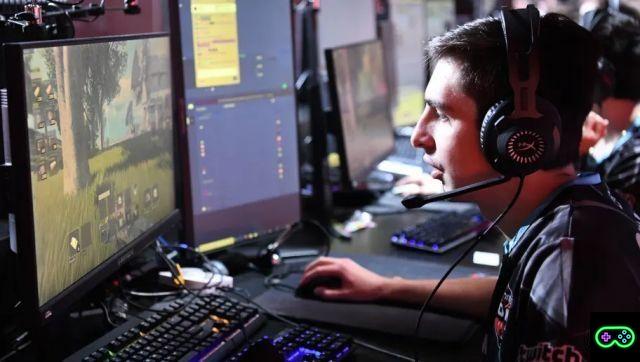
![[The Bear's Lair] God of War: Betrayal and Greek mythology](/images/posts/17432d3b12ecfec44b0b855d20c7520f-0.jpg)
